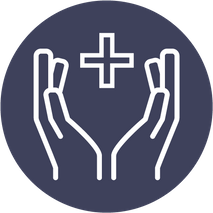Physical Therapy for lateral epicondylitis
AT EVOLVE
Physical Therapy for lateral epicondylitis
HOW CAN PHYSICAL THERAPY ADDRESS LATERAL EPICONDYLITIS?
Lateral epicondylitis is a common condition affecting the lateral aspect of the elbow. While you may have never heard the term lateral epicondylitis you have probably heard of the more common name for this condition–tennis elbow. Lateral epicondylitis causes painful symptoms at the elbow and forearm and can sometimes be difficult to treat on your own. Physical therapists are movement experts trained to evaluate and treat musculoskeletal conditions like tennis elbow. The goal of physical therapy for lateral epicondylitis is to pinpoint the underlying cause of your symptoms and develop a treatment plan to eliminate your symptoms now and in the future.
WHAT DOES PHYSICAL THERAPY TREATMENT FOR TENNIS ELBOW LOOK LIKE?
Physical therapy treatments for tennis elbow aim to reduce pain and discomfort in the involved tendons, improve tendon health and help restore your prior activity level. My team of therapists and I will start by getting to know your concerns and goals and performing a thorough physical exam of the elbow to determine the extent of your symptoms while identifying other impairments that may have contributed to the development of this condition. Next, we will create a treatment plan that might include manual therapy on the tendons themselves, modalities and exercises performed in the clinic as well as exercises performed by you in your home as part of a home exercise program.
WHEN WILL I BEGIN TO SEE RESULTS?
With regular attendance and participation in physical therapy, many of our patients begin to experience a reduction in symptoms like pain and stiffness within a few weeks. Because other impairments like muscle weakness, nonoptimal movement patterns or reduced flexibility may have contributed to the development of tennis elbow, it often takes longer to address all of the underlying factors. If you have been taking time off from your favorite activities, your therapist will help you resume them in a graded fashion while you continue to address tendon health and other contributing factors. Achieving long-lasting results may take some time, but dedication to your program will not only help you achieve these results but will help to decrease the likelihood of symptoms recurring in the future.
WHAT IS LATERAL EPICONDYLITIS?
If you lay your forearm out on the table in front of you, palm up, the bony area on the outside of the elbow is known as the lateral epicondyle. A sheath housing several tendons attaches to the bone here and acts as an anchor point for muscles that extend the wrist and hand. If you place your fingers on the muscles just below the lateral epicondyle and actively extend your wrist, you will feel them contract beneath your fingers. The term lateral epicondylitis refers to inflammation (itis) of the lateral epicondyle where the tendons attach. This condition can have several causes but all involve activities that rely on wrist extension such as the back swing of a tennis racket. Below are some ways lateral epicondylitis can develop:
- Increasing the volume of an activity too quickly
- Not taking enough rest from an activity
- Performing an activity with suboptimal form or technique
- Muscle weakness, motor control impairments or muscle length impairments that stress the tendons of the muscles
Tendons are strong but when repeated stress exceeds the tolerance of a tendon it can become inflamed or irritated at the attachment point. When this happens, symptoms of lateral epicondylitis can develop. If you have any of the following symptoms you may have lateral epicondylitis:
- Aching or burning pain at the lateral (outer) elbow sometimes radiating down toward the wrist
- Stiffness at the elbow
- Weakness in the forearm muscles
- Grip weakness
- Tenderness over the extensor muscles and tendons near the elbow
- Initially, pain may be present only when participating in activities requiring repeated wrist extension
- Over time symptoms can be present even at rest or at night
End Injury Progression
Physical Therapy for lateral epicondylitis in elbow has proven to prevent injury, slow and even stop pain issues, improve performance, and reverse injury progression in many cases.
Relieve Pain
The movements used in this technique can target your entire body helping you to manage discomfort and pain during the course of your physical therapy treatments.
Improve Range of Motion
Posture awareness is an important area to focus on due to the fact that certain positions may cause you further discomfort and pain.
Restore Mobility
You can regain mobility and flexibility by taking part in the stretches and exercises as prescribed by your physical therapist.
How Long Will Physical Therapy for LATERAL EPICONDYLITIS Last?
If you decide to work with a physical therapist to help correct your elbow issues, your entire treatment plan could consist of around 8-20+ different physical therapy sessions that will each last 60-90 minutes. Once you complete your customized physical therapy treatment plan, you will be able to continue to do the prescribed stretches and exercises utilized during your PT sessions yet in the comfort of your own home.
PHYSICAL THERAPY TREATMENT FOR LATERAL EPICONDYLITIS
As noted above, the approach to managing chronic or acute cases of lateral epicondylitis tends to differ. If you have a new or newly-exacerbated case of tennis elbow, inflammation around the tendon is likely present. While your physical therapy program will always be individualized, below are physical therapy treatments often prescribed to address acute lateral epicondylitis:
- Education on the likely cause as well as the pathophysiology of tennis elbow
- Recommendations on activity modification and rest to allow inflammation to subside
- Application of modalities such as ice, ultrasound, electrical stimulation or laser therapy to manage pain and inflammation
- Recommendations on the use of splints, taping or bracing as needed to minimize discomfort and allow for healing in the acute phase
As inflammation subsides, or in the case of a chronic tennis elbow where tendon degeneration is the primary issue, addressing contributing factors and improving tendon stiffness and muscle weakness are the primary goals of physical therapy. Below are common physical therapy treatments to address this type of tennis elbow:
- Soft tissue mobilization using tools like ASTYM, dry needling or Graston to remodel the injured tendon and encourage collagen production
- Exercises to enhance tendon stiffness and make it more resilient to stress
- These are often eccentric-focused exercises with special parameters around pain and symptom-provocation
- Exercises to address strength, muscle length and neuromuscular control around the elbow, forearm and wrist
- Training in movement technique and biomechanics to reduce repetitive stress on the tendons during sport, work or daily tasks
- Graded return to full activities
Lateral epicondylitis can feel stressful at times but it doesn’t need to be, we are here to help. If you are dealing with symptoms you think may be lateral epicondylitis, don’t wait to get started on an appropriate treatment plan. Call Evolve Physical Therapy today to get started on a program that will improve your symptoms for good. Call to Schedule a Consultation! 1-718-258-3300
Mill Basin (located in Harbor Fitness)
6161 Strickland Ave
Brooklyn, NY 11234
Monday: 7am-8pm
Tuesday: 7am-8pm
Wednesday: 8am-5pm
Thursday: 7am-8pm
Friday: 8am-1pm
Park Slope (located in Harbor Fitness)
550 5th Ave.
Brooklyn, NY 11215
Monday: 9am-8pm
Tuesday: 8am-6pm
Wednesday: 9am-8pm
Thursday: 8am-6pm
Friday: 8am-3pm
Gravesend
372 Avenue U
Brooklyn, NY 11223
Monday-Thursday: 8am-8pm
Friday: 8am-3pm
Kings Highway
945 Kings Highway
Brooklyn, NY 11223
Monday-Wed.: 12pm-8pm
Ready to take the next step to a healthier you?
Contact Us Today!
PHYSICAL THERAPY FOR LATERAL EPICONDYLITIS
Need Physical Therapy for lateral epicondylitis in elbow?
Let our caring and compassionate physical therapists help you with relieving pain while getting you back on your feet comfortably.
Call now to schedule your first PT consultation free of charge.
Call: 1-718-690-3229







